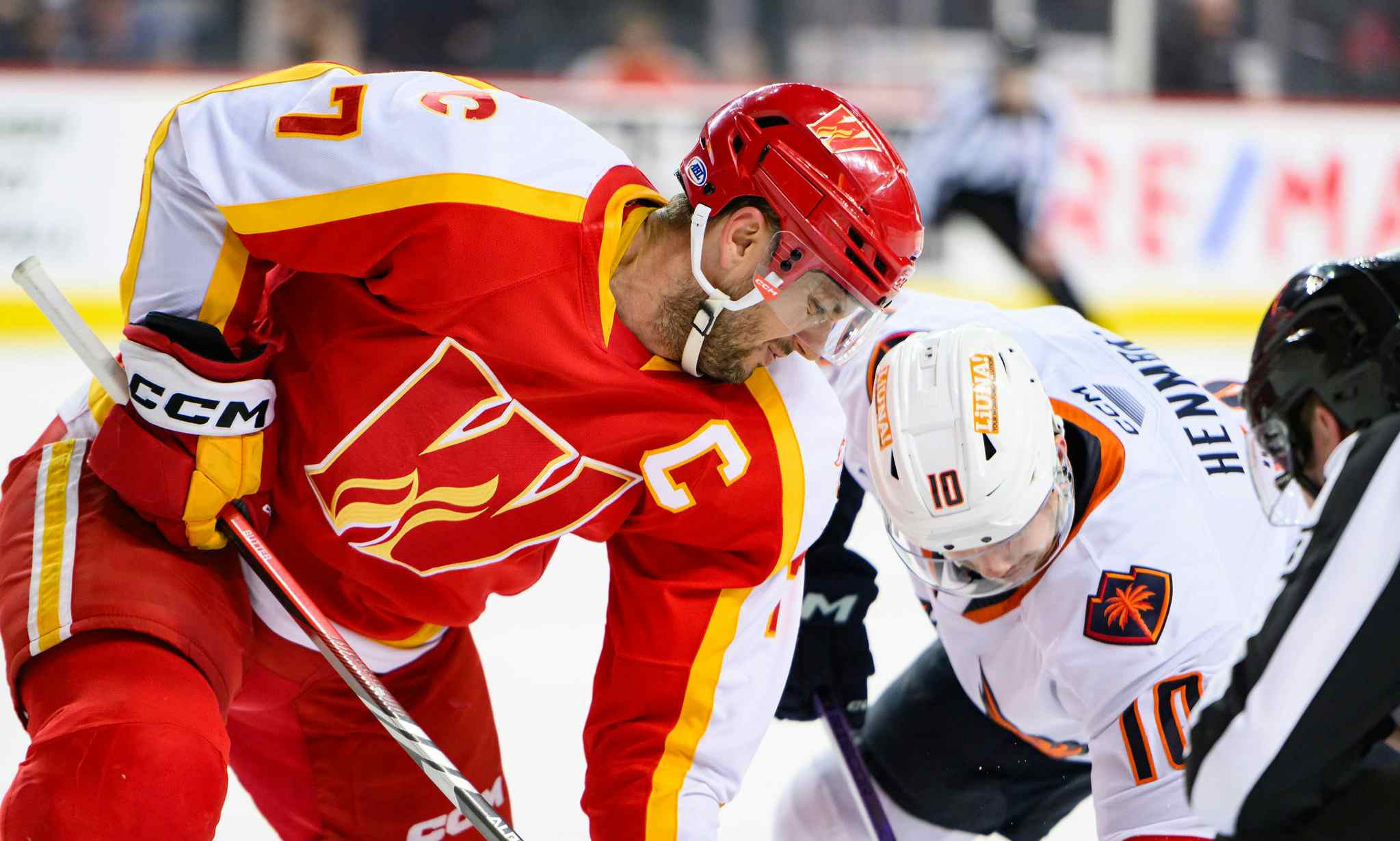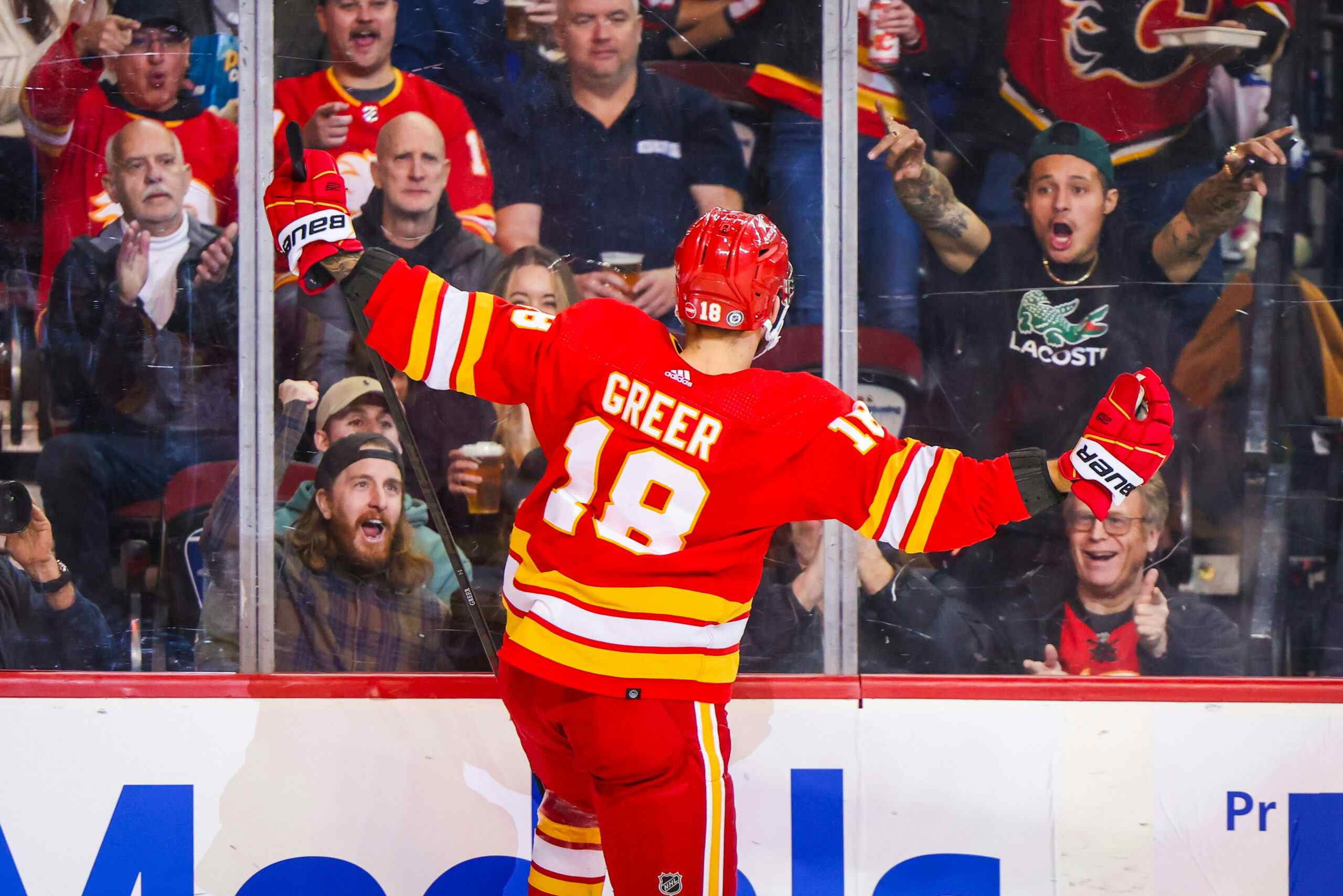Maximizing Calgary’s newest forwards

Neither Nick Shore nor Chris Stewart were high impact additions for the Flames at the trade deadline, which isn’t breaking news.
In specific roles, though, I think both of Calgary’s new forwards have a chance to be effective, providing their usage is correct. Evidence suggests there are specific, and different, ways to use Stewart and Shore to maximize their usefulness.
NICK SHORE
While I wouldn’t be banking on a lot of offensive upside from Shore, evidence points to him being an effective bottom six forward. He’s certainly a superior all around player compared to Stewart and his usage doesn’t need to be anywhere near as specialized (more on that later).
| Season | CF% | OZS% |
| 2015-16 | 61.2 | 54.1 |
| 2016-17 | 54.0 | 58.5 |
| 2017-18 | 52.8 | 38.9 |
Plotted above are Shore’s three seasons with the L.A. Kings and the body of work paints a pretty clear picture. When used in a bottom six role, Shore has done a nice job driving play and has specifically come out of his shell in that regard this season. There’s value in that, especially knowing how ineffective Calgary’s bottom six group has been this season.
In terms of a fit, there seems to be a pretty natural one on the team’s fourth line right now, especially when everyone is healthy. Knowing Shore has the ability to eat up defensive starts without getting crushed, and how the Flames have deployed their fourth line, Shore should be a good match with the team’s most frequent fourth liners.
| Player | OZS% |
| Matt Stajan | 39.6 |
| Troy Brouwer | 40.1 |
With Micheal Ferland’s imminent return and Kris Versteeg getting closer, I could see Calgary’s regular bottom six looking like this:
Sam Bennett-Mark Jankowski-Kris Versteeg
Nick Shore-Matt Stajan-Troy Brouwer
Nick Shore-Matt Stajan-Troy Brouwer
With so many interchangeable parts, and inevitable injuries, guys like Curtis Lazar, Garnet Hathaway, and the aforementioned Stewart could find their way into that mix, too. But, despite eating up too much of the team’s salary cap, Stajan and Brouwer have been generally decent when used in fourth line roles.
If his Flames debut is any indication, it looks like Shore is going to be used very much in the fashion laid out above. In 11:08 of work against the Rangers, Shore saw just three offensive zone faceoffs for a 30% ratio while shot attempts were 14-7 (66.7%) with him on the ice. Shore’s 7/11 mark (64%) in the faceoff dot made his first game with Calgary even more positive. All in all, Shore got off to a pretty nice start with his new team.
While still very early, you don’t have to squint to see where Shore projects with the Flames beyond this season. Stajan’s contract expires at the end of this season and, despite how much we all love him, another contract doesn’t make much sense.
Shore seems like the ideal replacement as Calgary’s everyday fourth line centre. He’ll be 26 next season, is controllable as a pending restricted free agent, will come at an affordable price, and does most of the same things Stajan has done the last number of seasons. If things play out, Shore has the chance of providing the Flames with good return on a seventh round pick.
CHRIS STEWART

Brace Hemmelgarn-USA TODAY Sports
Of these two acquisitions, Stewart is a far more limited player and thus needs his usage specifically tailored more. At this point in his career, Stewart requires heavily slanted minutes to avoid being a complete liability at five-on-five. His underlying numbers the last three years tell that story clearly.
| Season | CF% | OZS% |
| 2015-16 | 51.3 | 53.5 |
| 2016-17 | 40.6 | 60.4 |
| 2017-18 | 40.4 | 51.8 |
Even with a steady dose of offensive starts, Stewart bleeds shot attempts and is generally an ineffective player, at best. However, one thing he can do is shoot the puck. Stewart finishes scoring chances at a high rate and that’s why playing to his strengths is Calgary’s best, and likely only, option.
| Season | G60 | SH% |
| 2015-16 | 0.67 | 9.1 |
| 2016-17 | 0.97 | 16.1 |
| 2017-18 | 0.91 | 13.2 |
If Stewart is motivated and put in primarily offensive situations, there’s a chance he could help the Flames on the scoring side. If there’s going to be a spot where Stewart fits best, it’s going to be on Calgary’s third line. A look at how Calgary’s most frequent third liners have been used gives you an idea of how Stewart might fit.
| Player | OZS% |
| Mark Jankowski | 59.4 |
| Sam Bennett | 56.7 |
| Garnet Hathaway | 55.8 |
Jankowski, Bennett, and Hathaway possess three of the team’s top five offensive zone start ratios. If Stewart is going to have any chance for even tempered success, he’ll have to be right there with them. It’s anything but a guarantee, but if Stewart could be an upgrade on Hathaway, the right side of the Jankowski line seems like his best fit.
I must say, however, Stewart’s first two games with the Flames have dampened the very slight optimism I had upon his acquisition. Stewart has been ineffective at the very best and has followed script in leaking shot attempts; on ice attempts are 21-17 against (44.7%) despite a heavily slanted 63.6 OZS%. As such, there was very little opposition when the team decided to scratch him for Friday’s game against the Rangers.
Stewart’s only asset at this stage of the game is his ability to score, which is a nice thing to have. The problem is, though, it has become increasingly difficult to tailor Stewart’s ice time to exploit that ability; his skating has dropped off significantly and he really struggles defensively.
With the Flames getting healthier, I don’t see a sensible way to have Stewart in the lineup on a regular basis right now. However, if the team gets hit with a rash of injuries and need to call on him, the evidence above at least outlines the best way to use him. By feeding Stewart plenty of offensive time and easy opposition, Calgary can limit how much he hurts them and MAYBE get a little out of him offensively.
Recent articles from Pat Steinberg





